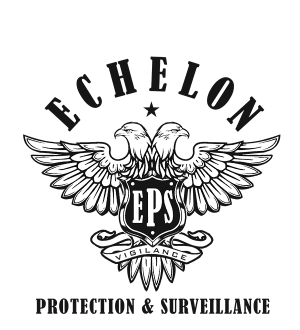 The rise of campus protests, particularly in light of recent global conflicts like the Israel-Palestine situation, has brought increased security challenges to higher education institutions. Protests are a vital part of free speech, but they also present risks that campuses must manage effectively to ensure the safety of all involved.
The rise of campus protests, particularly in light of recent global conflicts like the Israel-Palestine situation, has brought increased security challenges to higher education institutions. Protests are a vital part of free speech, but they also present risks that campuses must manage effectively to ensure the safety of all involved.
Here are five ways you can improve security on your campus.
-
Run a Security Risk Assessment
The first step in preparing for potential protests is to conduct a thorough security risk assessment. Each campus has unique vulnerabilities; understanding them is essential to planning an appropriate response. This assessment should include identifying key areas where protests are likely to occur, such as prominent campus spaces, and evaluating the risks associated with large crowds, disruption of academic activities, and the potential for violence. Additionally, it is essential to assess the potential for counter-protests or external actors who may escalate tensions.
A comprehensive security risk assessment allows administrators to take proactive steps to safeguard both protestors and bystanders. For example, designing specific protest areas can help manage crowds and minimize disruptions. Identifying exits, medical facilities, and safe zones will also ensure that security personnel and first responders are well-prepared in emergencies.
-
Facilitate Open Communication
Open communication is critical to maintaining safety during campus protests. This involves ensuring students, faculty, staff, and protesters are informed about the institution’s security plans and expectations. Communicating the rules for demonstrations—such as permissible locations, times, and behaviors—helps establish guidelines that protect free speech and public safety.
Universities should actively engage with protest organizers in the lead-up to demonstrations. Facilitating dialogue between organizers, campus security, and administrators can help ensure that protests remain peaceful and that any concerns are addressed ahead of time. Open communication helps de-escalate tensions and prevents misunderstandings from turning into conflict.
Additionally, schools should invest in communication platforms that provide real-time updates during protests. These platforms, such as mass notification systems, allow security teams to quickly inform the campus community about changing situations, potential hazards, or emergency instructions. Such systems enable rapid dissemination of information to large groups, reducing confusion and ensuring everyone is on the same page.
-
Use Technology to Coordinate Your Response
Technology plays a crucial role in managing campus protests. Surveillance cameras, access control systems, and crowd-monitoring tools allow security personnel to maintain an overview of the protest and respond swiftly to developing situations.
For instance, real-time location-sharing applications enable security teams to monitor and coordinate their movements efficiently. These systems allow for precise coordination, enabling officers to respond to specific areas quickly and ensuring that resources are not wasted on unnecessary coverage. Moreover, they can help security personnel locate and assist individuals in distress, enhancing the safety of everyone on campus.
Modern communication tools can also facilitate collaboration between campus security, local law enforcement, and other emergency responders. When a protest turns into a high-risk situation, these tools can provide a shared communication platform that ensures everyone is aligned in their actions. Mobile apps that allow students and staff to report suspicious activity or call for help discreetly can enhance campus security.
-
Work with Law Enforcement
Collaboration with local law enforcement is essential when dealing with large protests, particularly those that may attract external participants or become violent. Universities should have protocols that clearly define the roles of campus security and law enforcement during protests. This includes ensuring that campus security personnel have a strong working relationship with local police and that both groups are familiar with the campus layout and policies.
Law enforcement can provide additional resources such as crowd control units, surveillance teams, or tactical support during high-risk protests. However, it’s crucial to maintain a balance between maintaining safety and preserving the campus’s academic atmosphere. Law enforcement should be briefed on the institution’s commitment to free speech, and their presence should be as non-intrusive as possible to avoid escalating tensions.
Joint training exercises and regular communication between campus security and law enforcement ensure that both groups are prepared to act quickly and cohesively in an emergency. Memorandums of understanding (MOUs) or mutual aid agreements between institutions and local authorities can formalize this cooperation and ensure no delay in response during a crisis.
-
Hire Additional Security Guards During Demonstrations
Protests can quickly increase in size and intensity, often overwhelming a campus’s security infrastructure. To manage this, campuses should consider hiring additional security guards for large demonstrations. These guards, whether armed or unarmed, provide a visible deterrent to potential violence and help manage crowd control.
Temporary security personnel can monitor entrances, assist with access control, and ensure that only authorized individuals enter restricted areas. Additionally, they can support permanent campus security officers, allowing for better coverage of large events and enabling the core team to focus on higher-priority tasks, such as monitoring for potential threats or coordinating with law enforcement.
Hiring additional guards also enables a more measured response to protests, allowing campuses to ensure a strong security presence without appearing overly aggressive or militarized. This is particularly important in maintaining a positive relationship with protesters, as a heavy-handed security approach can sometimes provoke confrontations rather than prevent them.
Protect Your Campus with EPS
The rise of campus protests highlights the need for robust campus security measures. Institutions must strike a delicate balance between protecting free speech and ensuring the safety of all participants. By conducting security risk assessments, fostering open communication, leveraging technology, working with law enforcement, and bolstering security personnel during demonstrations, universities can create a safer environment for students and staff.
Partnering with Echelon Protection & Surveillance can provide the expertise and resources needed to navigate these complex situations. Contact us today to learn how we can help secure your campus and protect your community during protests and beyond.


